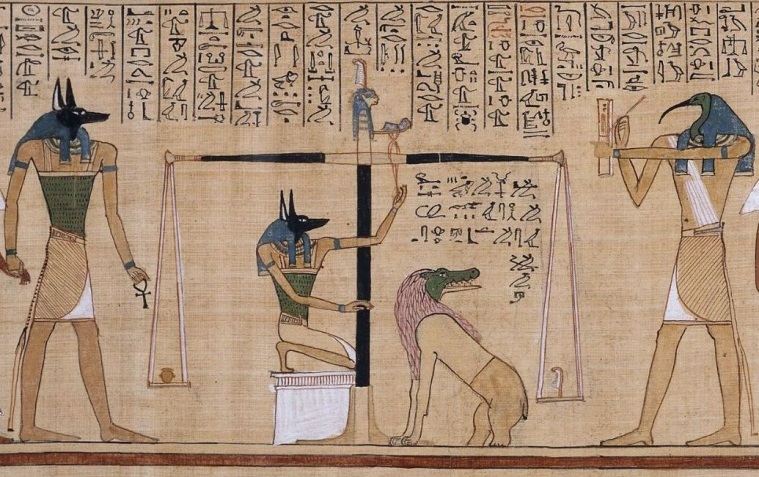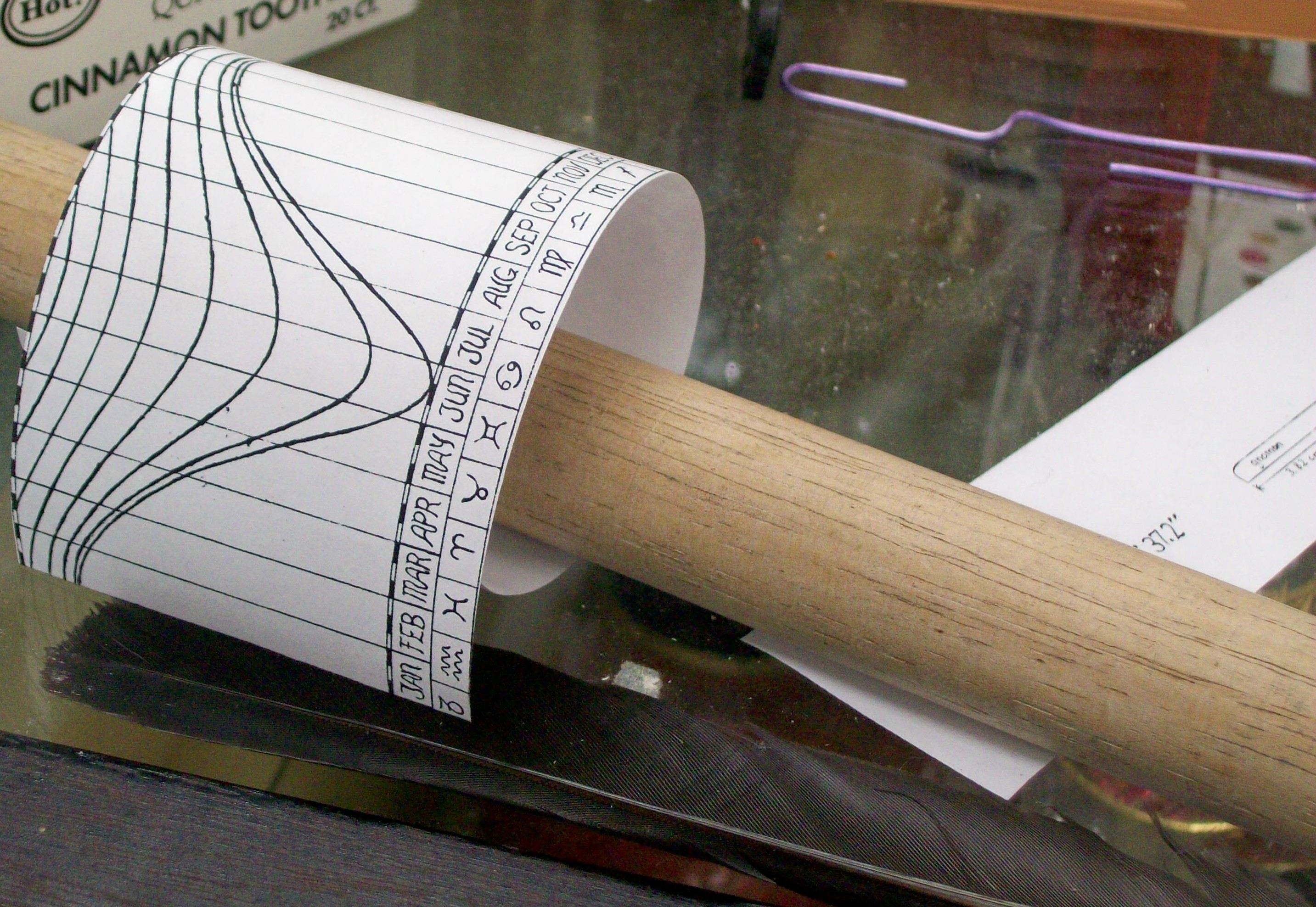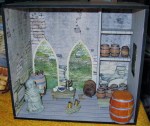
Various pieces have come up for use or for display. This is just a parking area. Hopefully it will be expanded over time. The page is in process. We’re trying to find all of the photos!
Items are personal property of members of House Capuchin, photos copyright to the owners. Some pieces were purchased, some gifted and some made.
Some information edited from Wikipedia, links provided.
*
*


The Hourglass – From Wikipedia, the free encyclopedia (edited) https://en.wikipedia.org/wiki/Hourglass
An hourglass (or sandglass, sand timer, sand clock or egg timer) is a device used to measure the passage of time. It comprises two glass bulbs connected vertically by a narrow neck that allows a regulated flow of a substance (historically sand) from the upper bulb to the lower one. Typically, the upper and lower bulbs are symmetric so that the hourglass will measure the same duration regardless of orientation. The specific duration of time a given hourglass measures is determined by factors including the quantity and coarseness of the particulate matter, the bulb size, and the neck width.
The origin of the hourglass is unclear. Its predecessor the clepsydra, or water clock, is known to have existed in Babylon and Egypt as early as the 16th century BCE. There are no records of the hourglass existing in Europe prior to the Early Middle Ages; the first documented example dates from the 8th century CE, crafted by a Frankish monk named Liutprand who served at the cathedral in Chartres, France. But it was not until the 14th century that the hourglass was seen commonly, the earliest firm evidence being a depiction in the 1338 fresco Allegory of Good Government by Ambrogio Lorenzetti.
Use of the marine sandglass has been recorded since the 14th century. The written records about it were mostly from logbooks of European ships. In the same period it appears in other records and lists of ships stores. The earliest recorded reference that can be said with certainty to refer to a marine sandglass dates from c. 1345, in a receipt of Thomas de Stetesham, clerk of the King’s ship La George, in the reign of Edward III of England; translated from the Latin, the receipt says: in 1345.
“The same Thomas accounts to have paid at Lescluse, in Flanders, for twelve glass horologes (” pro xii. orlogiis vitreis “), price of each 4½ gross’, in sterling 9s. Item, For four horologes of the same sort (” de eadem secta “), bought there, price of each five gross’, making in sterling 3s. 4d.”
Marine sandglasses were very popular on board ships, as they were the most dependable measurement of time while at sea. Unlike the clepsydra, the motion of the ship while sailing did not affect the hourglass. The fact that the hourglass also used granular materials instead of liquids gave it more accurate measurements, as the clepsydra was prone to get condensation inside it during temperature changes. Seamen found that the hourglass was able to help them determine longitude, distance east or west from a certain point, with reasonable accuracy.
The hourglass also found popularity on land. As the use of mechanical clocks to indicate the times of events like church services became more common, creating a “need to keep track of time”, the demand for time-measuring devices increased. Hourglasses were essentially inexpensive, as they required no rare technology to make and their contents were not hard to come by, and as the manufacturing of these instruments became more common, their uses became more practical.
Hourglasses were commonly seen in use in churches, homes, and work places to measure sermons, cooking time, and time spent on breaks from labor. Because they were being used for more everyday tasks, the model of the hourglass began to shrink. The smaller models were more practical and very popular as they made timing more discreet.
After 1500, the hourglass was not as widespread as it had been. This was due to the development of the mechanical clock, which became more accurate, smaller and cheaper, and made keeping time easier. The hourglass, however, did not disappear entirely. Although they became relatively less useful as clock technology advanced, hourglasses remained desirable in their design. The oldest known surviving hourglass resides in the British Museum in London.
Not until the 18th century did John Harrison come up with a marine chronometer that significantly improved on the stability of the hourglass at sea. Taking elements from the design logic behind the hourglass, he made a marine chronometer in 1761 that was able to accurately measure the journey from England to Jamaica accurate within five seconds.

The Balance


Measuring volume is pretty easy, at least since the ancient greek, Archimedes, jumped out of his bathtub, but weight is more tricky. .
<<<< Archimedes exclaiming Eureka. In his excitement, he forgets to dress and runs nude in the streets straight out of his bath.
Weighing scale – From Wikipedia, the free encyclopedia (edited)
A scale or balance is a device used to measure weight or mass. These are also known as mass scales, weight scales, mass balances, and weight balances.

The traditional scale consists of two plates or bowls suspended at equal distances from a fulcrum. One plate holds an object of unknown mass (or weight), while known masses are added to the other plate until static equilibrium is achieved and the plates level off, which happens when the masses on the two plates are equal. The perfect scale rests at neutral. Other types of scales making use of different physical principles also exist.
This type of scale can be dated at least to 2600 BCE.
Before standard weights and measures ordinances the weights for the balance varied from area to area and even from market to market!


Shepherd’s dial – edited from Wikipedia, the free encyclopedia


There were no wristwatches in the Middle Ages. Many people didn’t need anything but the noon mark that existed in most towns, or the bells that rang from local churches at regular times. People out in the wild lands (like shepherds) needed a way to tell time.
A shepherd’s dial (also known as a pillar dial or cylinder) is a type of sundial that measures the height of the sun via the so-called umbra versa. Its design needs to incorporate a fixed latitude, but it is small and portable. It is named after Pyrenean shepherds, who would trace such a sundial on their staffs. This type of sundial was very popular in the 16th, 17th and 18th centuries. Since the ancient Roman era, people have created sundials which tell the time by measuring differences in the sun’s height above the horizon over the course of the day – Vitruvius describes them as viatoria pensilia.
The earliest description of a shepherd’s dial as known today was written by Hermann of Reichenau, an 11th-century Benedictine monk who called it a cylindrus horarius. It was also known in the Middle Ages as a chilinder oxoniensis (Oxford cylinder). Such sundials did not need aligning north-south and so became very popular, appearing in Renaissance artworks such as Holbein’s 1528 Portrait of Nicolaus Kratzer and his 1533 The Ambassadors.


The Brewery display – A diorama created for demo purposes.

Brewing, whether of ale, beer, wine or mead was a big deal in the Middle Ages and Renaissance. The largest amount of brewing was done in the home, but monasteries, convents, castles and cities often had larger scale and more professional brewing.
This little friar has his own set-up. He has barrels for beer and wine, probably brewed with wild yeasts, but possibly with “barm” which is the froth from bread baking yeasts, that then became beer barm, then turned back into bread. Maybe the bakery is on the other side of the wall, there? There are sacks of ingredients, a cauldron for cooking and jars on the shelves. At another time of the year, strings of herbs would hang from the ceiling, but he’s used his up!
His garden would yield hops, mugwort, apples and other beer flavorings and a local orchard or berry field would give the ingredients for wine. There is probably a malt-house nearby, as well, that “malts” the flour and grains for the beer. I think that’s what’s in the sacks, myself.
To my eye he’s about to sample some beer from the last batch and is expecting company.


Galileo thermometer – Edited from Wikipedia, the free encyclopedia – https://en.wikipedia.org/wiki/Galileo_thermometer
A Galileo thermometer (or Galilean thermometer) is a thermometer made of a sealed glass cylinder containing a clear liquid and several glass vessels of varying density. The individual floats rise or fall in proportion to their respective density and the density of the surrounding liquid as the temperature changes. It is named after Galileo Galilei because he discovered the principle on which this thermometer is based—that the density of a liquid changes in proportion to its temperature.
Although named after the 16th–17th-century physicist Galileo, the thermometer was not invented by him. [Galileo did invent a thermometer, called Galileo’s air thermometer (more accurately called a thermoscope), in or before 1603.]
The instrument now known as a Galileo thermometer was invented by a group of academics and technicians known as the Accademia del Cimento of Florence, who included Galileo’s pupil, Torricelli and Torricelli’s pupil Viviani. Details of the thermometer were published in the Saggi di naturali esperienze fatte nell’Academia del Cimento sotto la protezione del Serenissimo Principe Leopoldo di Toscana e descritte dal segretario di essa Accademia (1666), the Academy’s main publication. The English translation of this work (1684) describes the device (‘The Fifth Thermometer’) as ‘slow and lazy’, a description that is reflected in an alternative Italian name for the invention, the termometro lento (slow thermometer). The outer vessel was filled with ‘rectified spirits of wine’ (a concentrated solution of ethanol in water); the weights of the glass bubbles were adjusted by grinding a small amount of glass from the sealed end; and a small air space was left at the top of the main vessel to allow ‘for the Liquor to rarefie’ [i.e. expand].

Operation
In the Galileo thermometer, the small glass bulbs are partly filled with different-colored liquids. The composition of these liquids is mainly water; some contain a tiny percent of alcohol, but that is not important for the functioning of the thermometer; they merely function as fixed weights, with their colors denoting given temperatures. Once the hand-blown bulbs have been sealed, their effective densities are adjusted using the metal tags hanging from beneath them. Any expansion due to the temperature change of the colored liquid and air gap inside the bulbs does not affect the operation of the thermometer, as these materials are sealed inside a glass bulb of fixed size. The clear liquid in which the bulbs are submerged is not water, but some organic compounds (such as ethanol or kerosene) the density of which varies with temperature more than water does. Temperature changes affect the density of the outer clear liquid and this causes the bulbs to rise or sink accordingly.

Star Globe, otherwise known as a pocket sky map – Handmade of paper, cardboard, a pin and a ping-pong ball.


Aquitanian Ring Dial – No description, yet.




Stonehenge Pocket Watch (a giggle) – This was gifted to Loren many decades ago after he pulled the “Shepherd’s Dial upside-down” on a good friend!

Page created and published 8/6/22 (C)M. Bartlett
Last updated 8/7/22









